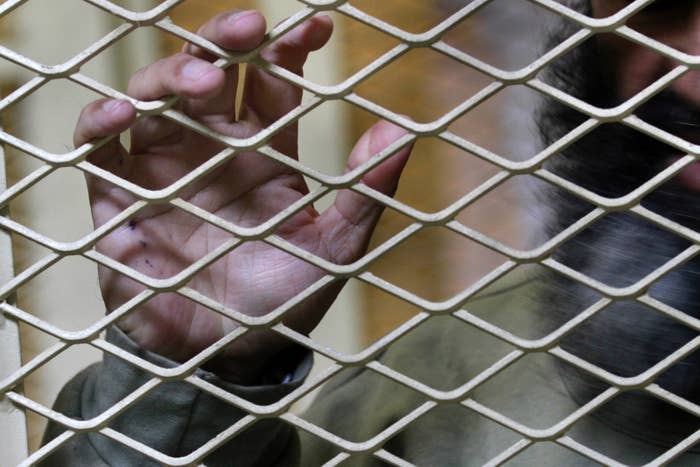
WASHINGTON -- A congressionally-mandated effort to overhaul the U.S.’s interrogation policies has laid bare old rivalries between the military and Washington's intelligence agencies -- and has left the White House’s so-called elite interrogation group out in the cold.
These tensions have emerged as the Obama Administration begins reassessing the section of the Army Field Manual that lists the approved interrogation techniques that government agents can legally use when questioning suspects. The recently passed National Defense Authorization Act (NDAA), the Pentagon’s annual priorities setting bill, requires that the Administration revise and update the manual, which critics say allows for use of controversial interrogation tactics such as solitary confinement and sleep deprivation.
Nearly absent from the process, though, is the Obama Administration’s little-known interagency interrogation force -- the High-Value Detainee Interrogation Group, colloquially known as the HIG. Launched in 2009, the HIG has spent the last six years and millions of federal dollars compiling research into the best interrogation methods. But despite that work, the group, several sources told BuzzFeed, has been largely strong-armed out of the interrogation policy discussions -- first by Republican lawmakers, and now, sources say, by the military.
“It is clearly an effort to minimize the role of the HIG,” said Steven Kleinman, a retired Air Force colonel involved with the HIG's research committee. “Given that it is the only agency within the U.S. Government with a charter for conducting research into the behavioral science that underpins interrogation, such a move is inexcusable.”
The House Armed Services Committee was not able to provide on record comment. The Army’s Training and Doctrine Command did not respond to requests for comment by deadline.
The new discussion on interrogation policy comes after lawmakers included a statute in the 2016 NDAA that, among other things, forbade the use of torture and further established Appendix M of the Field Manual as the backbone of U.S. interrogation strategy. Additionally, the Secretary of Defense, Director of the FBI, Attorney General, and Director of National Intelligence are required to update the long-untouched Appendix M.

The HIG, however, is not listed in the bill as a party to those discussions. BuzzFeed News has learned the HIG was originally written into the defense bill as a key player in updating the Field Manual. However, Republican lawmakers in the House, supposedly sour on the Obama-led initiative, insisted that the HIG be written out of those conversations.
“Early on there was an idea that future revisions [of the Field Manual] would be informed by research and the HIG,” said one person with knowledge of the situation, who was not authorized to speak on the matter. House lawmakers, though, balked at the HIG’s involvement, and the decision was made to sacrifice the language in order to get the larger anti-torture statute through, they said.
“My recollection of the conversation...didn’t center around the HIG at all, but generated from a concern that the way that the Senate version of the language was written was so broad that it could impact interrogation or interrogation of domestic criminals,” said one congressional aide familiar with the NDAA process. When asked how the HIG provision could’ve impacted domestic law enforcement, they were not able to say.
The language of the NDAA that passed Congress this summer requires that the HIG compile a report on best interrogation practices, as supported by its research. That report will be delivered to the group of cabinet leaders overhauling the manual, and “may include” recommendations of revisions. The HIG is drafting that report in preparation for its March 24, 2016 deadline, Joshua Campbell, a group spokesman, said.
“The HIG welcomes all opportunities to participate as fully as possible in any process which positions the [U.S. Intelligence Community] to better address the ever changing threats this nation faces,” Campbell said, when asked if the group had a position on its exclusion from the defense bill. “We are pleased the NDAA specifically tasked the HIG to provide input into this process and stand ready to assist further if requested.”
An earlier draft of the bill, though, legislated a far more prominent place for the HIG at the table during the Army Field Manual’s revision. The group was still expected to provide a report, but that report was required to include recommendations to the Field Manual. And, perhaps more importantly, that earlier version of the bill required that the military use those recommendations when making changes.
“The [HIG] report shall include recommendations for revisions to Army Field Manual 2—22.3 and shall be considered” in the Field Manual’s review, the original language of the bill, spearheaded by Sens. Dianne Feinstein and John McCain and obtained by BuzzFeed News, reads.
Despite the watered down language, hopes were initially high that the HIG would still be called up to share its years’ worth of research as revisions to the manual were considered -- the group has an entire manual detailing psychologically tested interrogation strategies based around developing a rapport with the subject, and has an arm dedicated to new research into interrogation methods.
“I strongly believe the HIG, and specifically the research arm of the HIG, must be absolutely involved in this,” Kleinman said. “I would argue that since it's the only agency directly involved in research related to interrogation, the HIG research division must not only be full partner in this important undertaking, it should rightfully take a leading role.”
“It is a huge sign of how inept they are. They just don’t know how to play the Washington game.”
But the months since the defense bill’s passage have seen the HIG left largely out of the conversation, sources told BuzzFeed.
It’s one more disappointment for a group that’s struggled to find a foothold in Washington.
In theory, the HIG was intended to serve as the Obama Administration’s clean break from the Bush-era torture program and the now-defunct CIA black sites. The interagency group was to be led by a designee from the FBI and include the best interrogation minds from across Washington’s military and intelligence arms.
It’s sole purpose: to develop research and interrogate only the most high-value terror suspects -- it would only be dispatched when the executive branch determined it was necessary. The number of times the group has actually been sent out remains a mystery, but it was reportedly sent to question Boston bomber Dzokhar Tsarnaev and Umm Sayyaf, the captured wife of a killed ISIS commander, among others.
The HIG’s relationship with the Army Field Manual is a complicated one. Appendix M’s listed interrogation techniques represent the outermost legal limits of the HIG’s potential interrogation strategies. But the techniques the group employs divert sharply from the controversial techniques in the manual. Where Appendix M still allows for coercive interrogation techniques such as humiliation, sleep deprivation and solitary confinement, the HIG is said to rely on non-coercive, rapport-based interviewing.
The years since its establishment, though, have seen the HIG left out in the cold in Washington's halls of power. Its congressional overseers don’t think they’re any good, its White House bosses aren’t engaged, and sources familiar with the group question whether HIG members really are the interrogation A-team that Obama envisioned. And, as D.C. prepares for a new White House resident in 2017, the group’s future is uncertain -- its existence hinges solely on an executive order, which can be easily discarded by 1600 Pennsylvania Avenue’s next resident.
There may be a glimmer of hope yet. The HIG is hosting a workshop on interrogation techniques this week — specifically the technique of “separation” as detailed in the Army Field Manual, which can involve solitary confinement and the use of blindfolds and goggles to disorient prisoners. Military personnel are expected to attend the HIG workshop.
“The HIG is hosting a workshop, which will include participants from academia, [non-governmental organizations], interrogation practitioners, and research professionals, to discuss the efficacy of the Separation technique as defined within Appendix M of the [Army Field Manual],” Campbell said, declining to discuss the workshop’s timing.
With its future uncertain, the HIG’s general absence from the Field Manual discussions could be an indicator of what the next two years has in store. Its exclusion from its own interrogation game -- and its failure to more firmly elbow its own way to the table -- isn’t inspiring confidence for the group’s defenders.
“It is a huge sign of how inept they are,” the first person said. “They just don’t know how to play the Washington game.”


